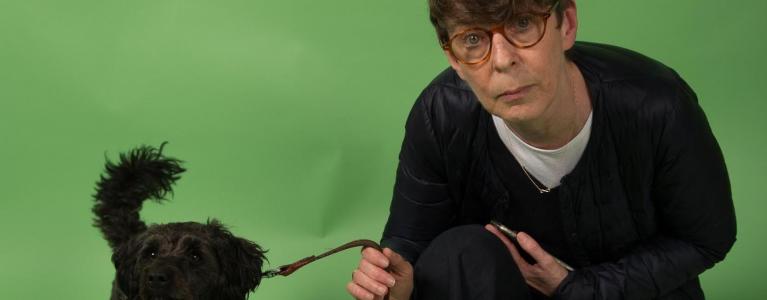
How did you get to be the Founder and Director of LADA?
Catherine Ugwu and I had been running the Live Art programme at the Institute of Contemporary Art since 1992, and left in 1998 - along with all the other ‘creative staff’ - in response to the organisation’s change in artistic direction.
At the same time, London Arts Board (the London branch of the Arts Council) was excited by the burgeoning Live Art scene in London, and especially the kinds of work we had been championing at the ICA, but concerned about the lack of wider support for it. They made funds available and issued a tender to set up a Live Art Development Agency. Catherine and I applied and were successful, and 20 years later I’m still at LADA.
What do you do on a day to day basis?
I micro-manage day-to-day things and macro-manage forthcoming programmes, research projects, publications, and organisational and sector wide challenges.
This translates into:
- I answer lots of emails from artists, promoters and researchers from London, the UK and internationally about all kinds of things from providing simple practical information to discussing big conceptual issues and how LADA might deal with them
- I discuss and plan forthcoming events at LADA’s base and elsewhere, and think about longer term projects and initiatives we might develop
- I work with LADA and other colleagues on producing programmes and events (from drafting contracts to writing promotional copy)
- I work with the LADA team on issuing calls for proposals from artists to undertake commissions or professional development opportunities, and also work with the LADA team on selecting responses to those calls and offering opportunities to artists
- I meet with artists and students who are doing research in our Study Room research library
- I write and/or proofread texts for LADA publications and other bits of print and publicity we produce, and work closely with our designer David Caines
- I correspond with our colleagues in the Live Art UK network (which LADA co-ordinates) on forthcoming national initiatives
- I report on our work to the Arts Council, other funders and our Board. All of this can happen on any given day
Wherever possible I squeeze in as many other things I can to support Live Art and the many, many brilliant artists we have the pleasure of meeting and working with.
What’s the best bit about your job?
Getting to work with smart artists and thinkers on innovative and inspiring projects and publications.
What’s the worst bit about your job?
Raising money to be able to work with smart artists and thinkers on innovative and inspiring projects and publications.
What's the thing that people don’t really know?
Live Art is about different ways of thinking about, making and experiencing art. It was probably best known for years for artists getting naked or doing strange things with their bodies.
Nowadays it's also recognised as a space where socially and culturally marginalised artists (particularly artists of colour, women, queer, disabled, trans, and working class artists) can create complex and challenging art about the lived experiences of what it means to see, and be in the world, differently.
However, what many people don’t know is that Live Art is also a really exciting space for art by and with (and not just for) kids and older folks. It can also be very accessible and funny.
How could I do what you do?
I am from a generation where we didn’t study or train to do what we do – we had a passion for something and were fortunate enough to be able to follow our dreams. Many of us fell into what we do as there weren’t any recognised paths to follow.
The art world is now much more ‘professionalised’ and it's possible to study to do what I do or to take part in a formal professional development scheme (such as Jerwood Creative Bursaries). You don’t have to have studied or trained to work in Live Art. What you really need is a commitment to what you believe in, the right attitude, and to be dedicated enough to work hard for the benefit of artists, arts workers and audiences.
Once you have those you need to start demonstrating that commitment and dedication by trying to ‘do your own thing’ and by knocking on the doors of those you’d like to work with. The right people will spot you and hopefully encourage you.
What advice would you pass on?
Be prepared to make sacrifices and to be misunderstood. Be prepared to be challenged. Be prepared to experience all kinds of exciting ideas and ways of working and don’t be prepared to compromise.